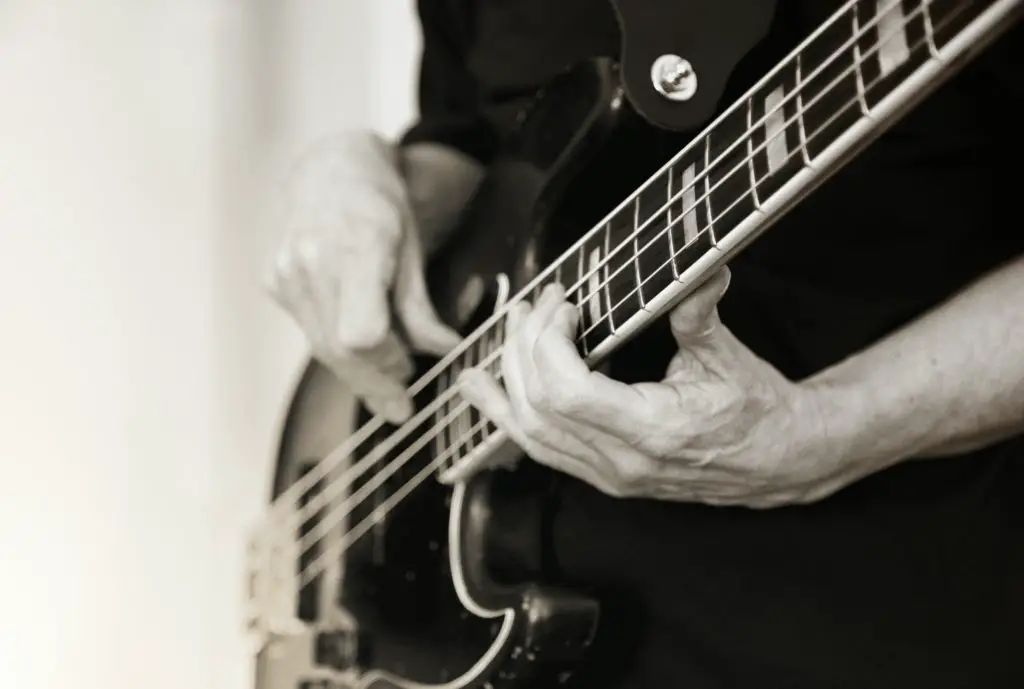Unlock Your Groove: Mastering 5 Beginner Bass Lines!
So, you’ve decided to delve into the realm of bass guitar playing? Congratulations, and welcome to a community that boasts a diverse array of talented and sometimes quirky individuals, including renowned figures like Flea, Paul McCartney, Sting, John Paul Jones, John Deacon, and Gene Simmons. If these names are unfamiliar, your initial step should involve looking them up and immersing yourself in their performances. Identify your favorites and allow their artistry to inspire and drive your musical journey. According to us bassists, the bass is the heartbeat of the band. While its parts may be lengthy and repetitive, observing professionals can assist you in infusing your unique attitude and passion into the instrument. Dive into the world of bass playing, exploring 5 beginner bass lines to elevate your skills and passion.

Now that you’re ready to play, the question arises: with such a vast musical landscape, where should you begin? In case you don’t already have specific songs in mind, here are some recommendations to help you grasp the basics of key signatures, fingerings, rhythm, and tempo—without subjecting you to monotonous repetitions of the same eight bars. The key to proficiency lies in repetition, a responsibility that rests on your shoulders, and the acquisition of sound technique.
5 Beginner Bass Lines
1. The White Stripes - Seven Nation Army
Here’s a good song to start with, from a band that operated as a duo without a bass player – the White Stripes! Surprising, right? Their track “Seven Nation Army” serves as an accessible entry point into more ambitious rock music.
Counting is crucial! Given the repetitive nature of bass parts, staying attentive is critical—there is no time for napping in this bass line.
This song presents a challenge with its extended, repetitive, yet straightforward bass part that keeps you on your toes. Mastery involves handling triplets, eighth notes, and rhythm variations, so make sure you’re well-hydrated before tackling it!
2. Deep Purple - Smoke On The Water
Rock music offers a captivating blend of characteristics from various genres. “Smoke on the Water” stands out as it follows a four-note blues scale, introducing the key of G Minor. While not overly complex, the bass part in this song serves as a test of finger strength and the ability to maintain a robust moderate tempo.
Repetitive eighth notes are vital, fostering stamina and demanding focused attention. A blues scale introduces a distinctive sound, with blues riffs being a fundamental element of rock music.
The abundance of octaves in the song challenges intonation, requiring precision and accuracy. With over 1200 notes, the song presents a lengthy and dense bass part. While it is playable, mastering it takes time and effort to reach and gradually sustain the full tempo until the end.
3. James Brown - I Got You (I Feel Good)
This timeless 12-bar blues riff seamlessly transitions into Brown’s iconic funk style. Whether you opt for the original 144 BPM or venture into the more energetic recording speed of 195, “I Got You” will surely enhance your sense of rhythm.
Embracing the blues is crucial, and mastering this genre is an essential skill for bassists. The blend of blues and funk in this classic makes it particularly enjoyable. While the notes are straightforward, the challenge lies in maintaining simplicity while experimenting with pushing the beat. Starting slow and repeating is essential.
Stepping away from conventional rock chord structures might be intimidating, but you can delve into the blues and infuse it with some funk in this song. With sufficient repetition, these elements will become second nature.
4. Gorillaz - Feel Good Inc.
The driving force behind this song is its bass riff, making it an inherently enjoyable piece to learn. It’s a straightforward riff to play, provided you pay close attention to timing and rests. You’ll notice a mismatch in pitch if you attempt to play this riff in Standard Tuning along with the song because the actual song is in a half-step lower tuning.
When tackling this riff, focus on the duration of each note. Some notes at the riff’s conclusion are sustained for most of the bar, while at other times, the final note concludes by the next beat. Understanding the duration of notes and when to stop them significantly contributes to maintaining a tight rhythm.
If you have yet to experiment with changing your bass tuning, try it with this song. Use a tuner to tune each string down a half-step—E string to Eb (E-flat), A string to A flat, D string to D flat, and G string to G flat.
5. Queen - Another One Bites the Dust
This uncomplicated riff illustrates the crucial role rests play in imparting a tight and impactful quality to a simple rhythm. Carefully listen to the song, paying attention to the duration of the notes before they are cut off.
You may discern a slight tuning discrepancy when attempting to play along with the song. The instruments in the song are tuned approximately 1/4 pitch higher than the standard.
If your bass seems slightly off while playing with the song, don’t be concerned—it’s not your playing; it’s the song. You can find ‘pitch corrected’ versions on YouTube that have been tuned to standard tuning for you to use when playing along.
When practicing this riff (or any other riff), utilize a metronome or drum machine to ensure precise timing, especially for the first note of each bar. Beginners may initially need help with the timing leading up to the start of the riff. Consistent practice will enable you to master the timing of these notes, allowing the rest of the riff to flow seamlessly.
Practicing without a metronome or drum machine could lead to the development of bad habits or a weak sense of timing. These tools will indicate any slight timing deviations. Minor timing errors might go unnoticed when playing solo.
Although these 5 beginner bass lines are quick to learn, they present excellent opportunities to enhance and refine your rhythm and sense of timing.



